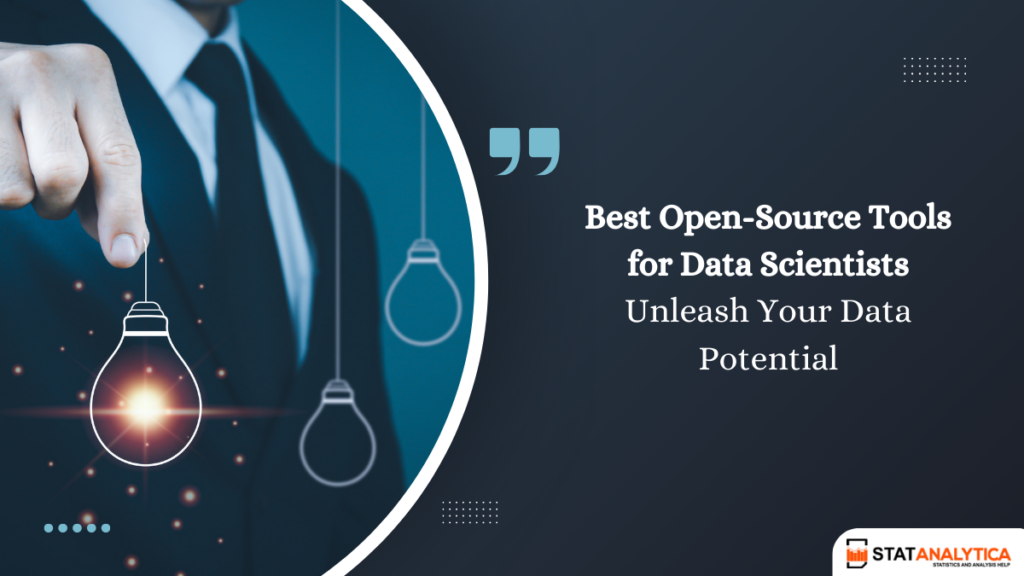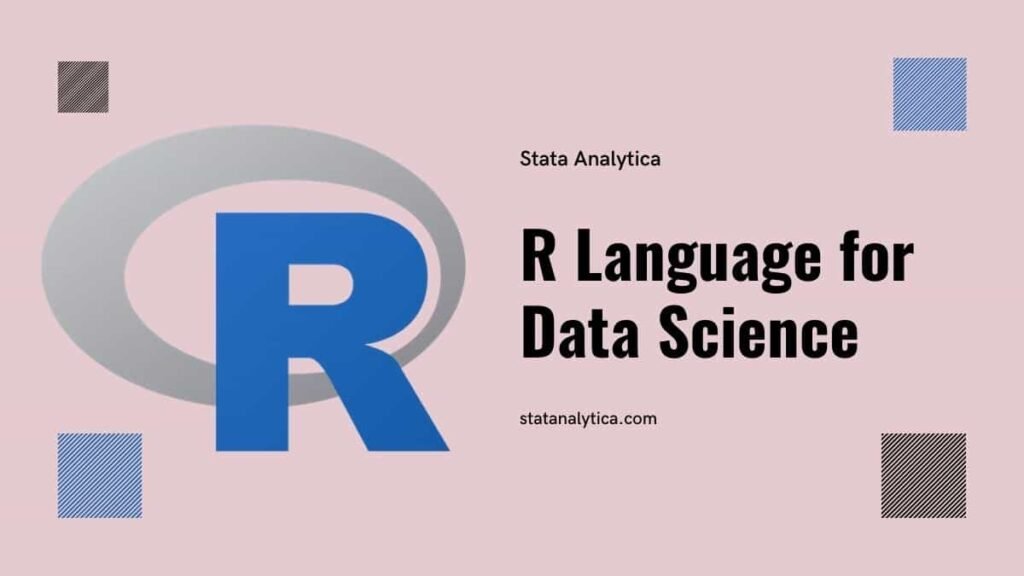Data science is a constantly evolving field with a wide range of tools for handling massive datasets, conducting complex analyses, and visualizing insights appropriately. Open-source tools have transformed the landscape, delivering wide-ranging, efficient, and economical solutions to data scientists worldwide.
As companies become obsessed with data-driven decisions, open-source tools provide a reliable method for working with large volumes of data. Such tools give professionals the capacity to execute complicated calculations, create machine learning algorithms, and create attractive visualizations quickly.
This blog post describes the best open-source tools for data scientists, which will make your life easier and help you become more productive. These tools are designed to assist both beginners and experts with data prepping, machine learning, statistical analysis, and visualization—all for free!
Why Choose Open-Source Tools for Data Science?
Table of Contents
Open-source tools offer numerous advantages, including:
- Cost-effectiveness – No expensive software licenses are needed, making these tools accessible to everyone.
- Strong community support – Active communities provide regular updates, troubleshooting help, and a vast collection of tutorials.
- Flexibility – Open-source tools allow users to modify code to meet specific needs, making them ideal for customization.
- Scalability – These tools efficiently handle small and large datasets, making them suitable for startups and enterprises alike.
This is one of the factors that makes open-source solutions the go-to option that helps data scientists do their tasks with ease and no big expenses. Doesn’t matter if you are in academia, business intelligence, or artificial intelligence, open-source tools will give you a plethora of options for analytic capabilities.
Top Open-Source Tools for Data Scientists
1. Python
Considered one of the most popular programming languages in data science, Python is a simple, versatile, and well-featured language with a great standard library. It offers excellent support for numerical computing, automation and machine learning.
- Key libraries: Pandas (data manipulation), NumPy (numerical computing), Scikit-learn (machine learning), Matplotlib & Seaborn (data visualization).
- Best suited for: Data manipulation, statistical analysis, machine learning, and automation.
Python is widely adopted in the industry due to its ease of learning and robust capabilities, making it an excellent choice for both beginners and professionals.
2. R
R is a powerful statistical computing tool used for data analysis and visualization. It is widely used in academia and research institutions due to its statistical computing power.
- Key libraries: ggplot2 (data visualization), dplyr (data wrangling), caret (machine learning modeling).
- Best suited for: Statistical analysis, academic research, and data visualization.
R provides strong capabilities for exploratory data analysis and is particularly useful for statisticians and data analysts who work with large datasets.
3. Data Visualization Tools
Tableau Public
An open-source version of Tableau that allows users to create interactive visualizations. It enables users to generate dashboards that simplify complex datasets into understandable insights.
- Best for: Data storytelling and business intelligence.
Plotly
A Python and R-based visualization library for creating interactive charts and dashboards. It is widely used for real-time data visualization and reporting.
- Best for: Web-based visualization and real-time data representation.
Effective data visualization is essential for communicating insights, and these tools help transform raw data into meaningful visual narratives.
4. Machine Learning & Deep Learning Frameworks
TensorFlow
Developed by Google, it supports neural networks and machine learning applications at scale. It is extensively used in deep learning applications such as image recognition, speech processing, and AI-driven solutions.
- Best for: AI-driven projects and deep learning models.
PyTorch
Developed by Facebook AI Research, it is known for flexibility and efficiency. PyTorch is particularly popular in the research community due to its dynamic computation graph.
- Best for: Research-oriented AI projects and prototyping.
These frameworks help developers and researchers build powerful AI models, pushing the boundaries of artificial intelligence and machine learning.
5. Big Data & Distributed Computing
Apache Spark
A fast big data processing engine with built-in machine learning libraries. It is designed for large-scale data processing and provides high-performance analytics.
- Best for: Handling large datasets and real-time analytics.
Hadoop
A powerful tool for distributed storage and batch processing. It enables organizations to manage massive datasets efficiently.
- Best for: Large-scale data processing and scalable storage solutions.
For businesses dealing with massive datasets, these tools provide an efficient way to process and analyze information at scale.
6. Data Collection & Web Scraping
BeautifulSoup
A simple yet powerful Python library for web scraping. It helps extract useful information from HTML and XML files with ease.
- Best for: Extracting data from websites with minimal effort.
Scrapy
An open-source web crawling framework designed for structured data extraction. It is widely used in data mining projects that require large-scale web scraping.
- Best for: Large-scale web scraping projects.
Web scraping tools like these help data scientists gather valuable information from websites, which can be used for market analysis, sentiment analysis, and research.
Comparison of Open-Source Tools for Data Scientists
| Tool | Purpose | Key Features |
| Python | Programming & Data Analysis | Pandas, NumPy, Scikit-learn, Versatile & widely used |
| R | Statistical Computing | ggplot2, dplyr, caret, Best for research & visualization |
| Tableau Public | Data Visualization | Interactive charts, Business intelligence, User-friendly |
| Plotly | Data Visualization | Web-based, Real-time interactive graphs |
| TensorFlow | Deep Learning | Scalable, Google-backed AI framework |
| PyTorch | Deep Learning | Research-oriented, Flexible modeling |
| Apache Spark | Big Data Processing | Real-time analytics, ML libraries included |
| Hadoop | Big Data Storage & Processing | Distributed storage, Handles massive datasets |
| BeautifulSoup | Web Scraping | Simple HTML parsing, Ideal for small-medium projects |
| Scrapy | Web Scraping | Large-scale extraction, Automated crawling |
Final Thoughts: Choose the Right Tool for Your Needs
Given the myriad of open-source tools, your choice is highly dependent on your requirements. If you are more into machine learning, then you will be better off with Python Scikit-learn or TensorFlow. Apache Spark and Hadoop: Both are great for big data processing. Tableau Public and Plotly are two of the best options when it comes to data visualization.
With these weapons in your arsenal, you can easily level up your data science game and make confident decisions about data! Open-source analytics tools not only offer novel functionalities but also facilitate collaboration and knowledge-sharing across the data science domain.
Also Read: RapidMiner vs Python for Machine Learning: A Comprehensive Comparison for 2025
Which tool is best for machine learning?
TensorFlow and PyTorch are the best open-source frameworks for machine learning and deep learning projects.
How do open-source tools benefit data scientists?
Open-source tools provide cost-effective, flexible, and scalable solutions while offering strong community support and customization options.
Can I use open-source tools for commercial projects?
Yes, most open-source tools allow commercial use, but it’s important to check their licensing terms before using them for business purposes.


